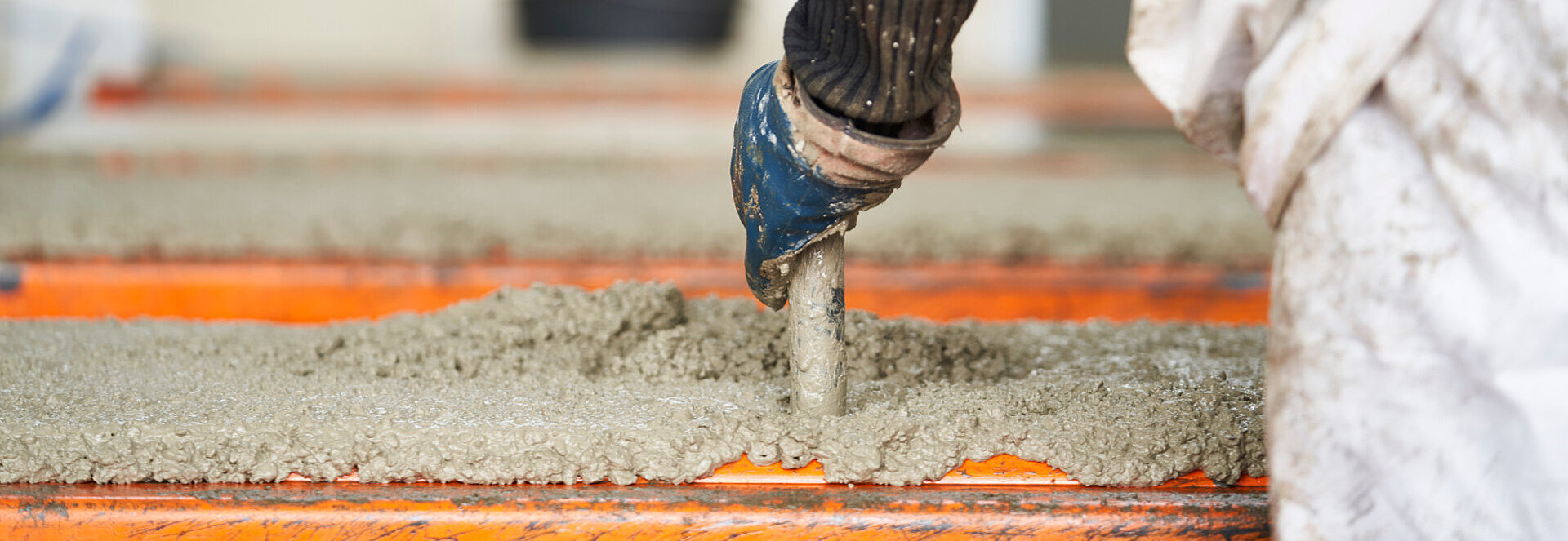Landmarks, Not Landfill
At the Bayern-Kaserne (former Bavarian barracks) in Munich, a ground-breaking new project is currently taking center stage: the rubble from the site’s demolished buildings is being completely recycled for reuse on-site in new structures. The demolition of the old buildings, built by the Wehrmacht, began three years ago.
Professor Andrea Kustermann and her team from the Faculty of Civil Engineering at HM are developing the recipe for recycled concrete or “R-Concrete.” With it, they hope to reduce the world’s enormous quantities of concrete rubble.


Germany’s Waste Problem
Throughout Germany, the capacity of landfills is already largely exhausted, with millions of tons of new rubble being added every year. Even now, meter-high piles of rubble are accumulating on the site of the former barracks. The “deconstruction” will leave behind a total of 300,000 tons of concrete, brick, and mortar debris. At the same time, new sand and gravel for construction are still being mined. And transporting the rubble consumes fossil fuels.
Rubble as a Raw Material for Concrete
For Andrea Kustermann, the rubble is a highly interesting research object. “As concrete is the most widely used building material in the world, concrete recycling can save enormous amounts of resources everywhere,” she says. In fact, recycling building materials on-site could significantly improve the eco-balance of the construction industry.
The professor pays weekly visits to the construction site to take samples: “With the model project, which has received €35,000 in funding from the municipal government, we want to find out how concrete from the demolition of old buildings can be 100% recycled.”

Rare Circular Economy in Concrete Construction
The fact that the principals of circular economy have rarely been applied to concrete construction in Germany is partly due to rigid building regulations: until now, only a restricted admixture of coarse-grained material has been permitted, and sand cannot be used at all. Porous components in cement can absorb water and deform, causing the concrete to crack when temperatures drop below freezing. Since no suitable formulations of R-concrete have been available before now, building with concrete made from 100%-recycled aggregate remains a novelty in Germany.
As concrete is the most widely used building material in the world, concrete recycling can save enormous amounts of resources everywhere.Andrea Kustermann, professor in the Faculty of Civil Engineering at HM
A Research Institute for Sustainable Building
In 2019, HM founded the Institute for Material and Building Research (IMB) in order to promote and advance the study of sustainable building practices. At the IMB, Kustermann and her colleagues are working together to achieve this goal. The IMB’s running projects not only explore the use of recycled aggregate but are also looking at the reuse of recycled sand.
New Networks for International Researchers
In order to develop their work, Kustermann and her team are collaborating with industry partners and other researchers. They are particularly open to the recruitment of new scientific researchers and doctoral candidates who are interested in these subjects. Guest scientists already working on sustainable building are also welcome to get in touch with Professor Kustermann.
Working at a University of Applied Sciences
- What is a University of Applied Sciences?
- Getting to know Universities of Applied Sciences as a visiting researcher.
- Doing your PhD or becoming a professor at a University of Applied Sciences
100% R-Concrete for Building Construction
“Through our experiments, we want to show that recycled concrete with 100%-recycled aggregate is definitely suitable for new concrete constructions,” explains Kustermann. “However, you have to know your material’s properties exactly to be able to judge where it can be used. It makes a difference if you are building a façade, or an interior wall that is never exposed to frost.”
Cooking Up the Right Recipe for Fully Recycled Aggregates
Rows of labeled mortar tubs line the wall of the concrete lab at HM. The concrete debris in them was prepared for reuse by the project’s cooperation partner, the demolition company Ettengruber, at their crushing and screening plants. All of the samples are now fine-grained, but contain different amounts of brick, plaster, and concrete. “That’s why we have to develop different recipes for processing,” explains Kustermann.


R-Concrete in Real Tests
First, the grain sizes in the aggregate are determined, and density and water absorption are measured. Then the engineers document the proportions precisely and mix the material with cement and water. Finally, sample walls are poured. Using these, the stress tests will be carried out. “With these tests, we can determine how resilient the finished concrete is and how often it can freeze and thaw without being damaged,” explains Kustermann.
When all the tests have been completed, the team will submit an application to the building authorities for the use of the 100%-recycled material. By 2020, the first temporary buildings will be constructed on-site using the “new” building material.
If you would like to find out about opportunities relating to the project, contact Professor Andrea Kustermann. More information on the Institute for Material and Building Research at HM is available on their website.



